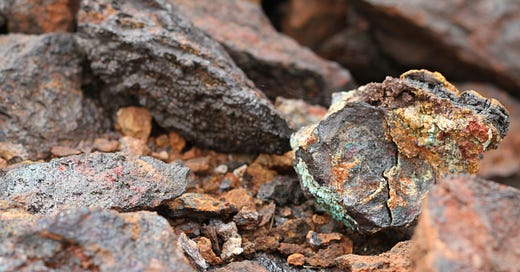Flurry of executive orders signal new approach to E&E policy
Renewed focus on critical minerals dominance
Happy Monday! Mr. Trump issued a number of executive orders that will steer the direction of U.S. energy policy in the right direction. I’m particularly excited about the order that unleashes Alaska’s natural resources!
This week, I recorded a podcast with hardrock mining specialist Debra Struhsacker and John Hinderaker, President of American Experiment and commentator at Power Line, to discuss Mr. Trump’s executive orders for the American Experiment podcast (to be published soon).
President Donald Trump has wasted no time in issuing executive orders to restore the U.S.’ energy dominance. His slew of actions has promised a renewed focus on critical minerals, expedited permitting, and unleashing domestic natural resources.
Mr. Trump is prioritizing the U.S.’ mineral dominance, which is good news for Minnesota with its world-class deposits of critical minerals in the Duluth complex. Agencies are directed in Section 9 of the “Unleashing American Energy” order to identify actions that are imposing “undue burdens on the domestic mining and processing of non-fuel minerals” and to walk those back, as well as reconsider public lands withdrawals. The U.S. Geological Survey is also directed to consider adding uranium to the list of critical minerals, as well as prioritize ongoing geologic mapping to discover previously unknown deposits.
The Commerce Department is also directed to consider the “national security implications of the Nation’s mineral reliance,” a risk American Experiment has consistently warned of in our report, Mission Impossible. It’s encouraging that critical minerals are placed with equal importance alongside other energy resources in the administration’s new policies.
Other notable pieces of the many executive orders issued this week:
Agencies are directed to “immediately pause” disbursements of funds from the 2022 Inflation Reduction Act, which may cost $1.2 trillion when all is said and done.
Agencies are directed to find ways to expedite the permitting process under the National Environmental Policy Act (NEPA), a recommendation American Experiment made in Mission Impossible.
Mr. Trump issued a memorandum calling for review of leasing and permitting for offshore wind farms. Offshore wind is highly subsidized and one of the most expensive forms of generation, and evidence is mounting that offshore wind turbines are disturbing endangered whale populations and fisheries.
Mr. Biden’s pause on permitting for liquified natural gas export projects is lifted.
Mr. Biden’s moratorium on offshore oil and gas leasing, which blocked 625 million acres of coastal lands off of the Atlantic and Pacific oceans, as well as a portion of the eastern Gulf of Mexico (America?) and Alaska’s Bering Sea, is lifted.
One order focuses entirely on reversing restrictions on natural resource extraction in Alaska, including a walking-back of Biden-era lease cancellations in the Alaska National Wildlife Refuge (ANWR) and a rule that places more than 40 percent of the National Petroleum Reserve-Alaska (NPR-A) off limits. In a recognition of the importance of critical minerals, the EO advances the Ambler Road access project. The rule also allows road building and logging in a small portion of the Tongass National Forest.
The EPA is to issue guidance within 60 days to “clarify” the agency’s approach to the “social cost of carbon,” which is a calculation that claims to account for the costs of climate change, but in effect tips the scales against approval of oil and gas projects (and more).
One order effectively withdraws the U.S. from the Paris Climate Agreement.
The American Climate Corps is to be disbanded.
The EPA and other agencies are required to reexamine their efficiency standards for household appliances.
Governing by executive order is not always the right choice, and in an ideal world, Congress ought to be making decisions about the U.S.’ energy and environmental policy. However, Congress has largely abdicated its responsibilities to executive branch agencies like the Department of Energy, the Department of the Interior, and the Environmental Protection Agency. Many of Trump’s executive orders pause rules that the Biden administration pushed through in its final weeks, and direct departments and agencies to review previous rules.
There will surely be legal challenges to many of Mr. Trump’s orders, and it’s unclear which will survive scrutiny, but at the very least, they offer a useful guidepost to Mr. Trump’s approach to energy and environment policy, which will prioritize reliable energy resources, expedited permitting, and rational energy policy.
This piece was originally published on January 22, 2025, at Center of the American Experiment.




Sarah, The Social Cost of Carbon (SCC) is an extremely malleable estimate of possible future costs.
https://www.therightinsight.org/Social-Benefits-of-Carbon
Nice essay, thank you ma'am. But, if we do not get those works underway immediately, they stand as potential victims to a future administration that is as hell-bent on destroying our economy as was the last one.